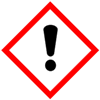 |
Monothioglycerol or Thioglycerol or Thioglycerin or 3-Mercaptopropane-1,2-diol SDS Safety Data Sheet of Supplier Exporter Manufacturers' Representative |
Email: info@ammol.org |
Call Toll Free +1-855-552-6665 |
Monothioglycerol or Thioglycerol or Thioglycerin or 3-Mercaptopropane-1,2-diol
CAS Number: 96-27-5
Molecular Formula: C3H8O2S
Molecular Weight: 108.16
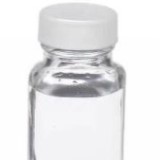
Monothioglycerol or Thioglycerol or Thioglycerin or 3-Mercaptopropane-1,2-diol
Monothioglycerol or Thioglycerol or Thioglycerin or 3-Mercaptopropane-1,2-diol
SDS, Safety Data Sheet
MSDS Sheet, Material Safety Data Sheet 04-Feb-24
1. Product Identification
Product Name & Other Names: Monothioglycerol or Thioglycerol or Thioglycerin or 3-Mercaptopropane-1,2-diol.
CAS No.: 96-27-5
EINECS EC-No.: 202-495-0
Relevant uses and uses advised against (if any): Industrial Manufacturing.
Supplier: American Molecules, 9910 Bent Oak Dr, Houston, TX 77040, USA.
Call Toll Free: 1-855-55-AMMOL 1-855-552-6665.
In case of emergency contact: Will be given with the supply.
2. Hazards Identification
GHS, Globally Harmonized System Classification in accordance with 29 CFR 1910
Classification according to Regulation (EC) No 1272/2008
Acute toxicity, Oral (Category 4) H302
Acute toxicity, Dermal (Category 3) H311
Skin irritation (Category 2), H315
Skin sensitization (Sub-category 1B), H317
Labeling according to GHS & Regulation (EC) No 1272/2008
GHS Label Elements 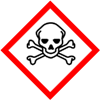 Toxic |
GHS Label Elements |
Signal Words: Danger
Hazard statements:
H302: Harmful if swallowed.
H311 Toxic in contact with skin.
H315 Causes skin irritation.
H317 May cause an allergic skin reaction.
Precautionary statements:
P260: Do not breathe dust/fume/gas/mist/vapors/spray.
P262: Do not get in eyes, on skin, or on clothing.
P270: Do not eat, drink, or smoke when using this product.
P271: Use only outdoors or in a well-ventilated area.
P273: Avoid release to the environment.
P280: Wear protective gloves/protective clothing/eye protection/face protection.
P301+P312: IF SWALLOWED: Call a POISON CENTER or doctor/physician if you feel unwell.
P302+P352: IF ON SKIN: Wash with soap and water.
P304+340: IF INHALED: Remove victim to fresh air and keep at rest in a position comfortable for breathing.
P305+P351+P338: IF IN EYES: Rinse cautiously with water for several minutes. Remove contact lenses, if present and easy to do. Continue rinsing.
P301+330+331: IF SWALLOWED: Rinse mouth. Do NOT induce vomiting.
P332+P313: If skin irritation occurs: Get medical advice/attention.
P333+313: If skin irritation or a rash occurs: Get medical advice/attention.
P337+P313: If eye irritation persists: Get medical advice/ attention.
3. Composition/Information on Ingredients
Product Name & Other Names: Monothioglycerol or Thioglycerol or Thioglycerin or 3-Mercaptopropane-1,2-diol.
CAS No.: 96-27-5
EINECS EC-No.: 202-495-0
4. First Aid Measures
Always seek medical attention after first aid measures are provided.
Inhalation: Remove to fresh air. If not breathing, give artificial respiration. If breathing is difficult, give oxygen. Get medical attention.
Ingestion: Never give anything by mouth to an unconscious person. Get medical attention.
Skin Contact: Wipe off excess material from skin then immediately flush skin with plenty of water for at least 15 minutes. Remove contaminated clothing and shoes. Get medical attention. Wash clothing before reuse. Thoroughly clean shoes before reuse.
Eye Contact: Immediately flush eyes with plenty of water for at least 15 minutes, lifting lower and upper eyelids occasionally. Get medical attention immediately.
5. Fire Fighting Measures
Flammability of the Product: Non-flammable. However, it will burn at elevated temperature.
Products of Combustion: Sulphur oxides, Carbon oxides, fumes.
Fire Extinguishing Media: Use water spray, alcohol-resistant foam, dry chemical, or carbon dioxide. Use water to cool fire-exposed containers.
Special Information: In the event of a fire, wear full protective clothing and NIOSH-approved self-contained breathing apparatus with full face piece operated in the pressure demand or other positive pressure mode. At elevated temperatures under fire conditions, it may produce toxic or irritating fumes. Fire-extinguishing work is done from the windward and the suitable fire-extinguishing method according to the surrounding situation is used. On decomposition it may emit hydrogen sulfide. Containers may explode on heating.
6. Accidental Release Measures
Personal precautions, protective equipment, and emergency procedures: Avoid breathing dust/fumes/gas/mist/vapors/spray. Use individual protective equipment (waterproof boots, suitable protective clothing, safety glasses, etc.). Restrict unprotected personnel from the area. Prevent any contact with hot surfaces. Do not approach facing the wind.
Environmental precautions: Do not let the product enter drains, soil, or water sources.
Methods and materials used for containment cleanup procedures and Storage: Corrosive solid. Avoid touching the spilled material. Do not inhale dust, vapors, mist, or gas. Avoid dust formation. Contain spilled material. Cover with an inert, non-combustible absorbent material, (e.g., sand, earth, diatomaceous earth, vermiculite). Use a shovel to put the material into a convenient waste disposal container.
7. Handling and Storage
Precautions for safe handling: Do not ingest. Do not breathe dust. Apply according to good manufacturing and industrial hygiene practices. Ensure proper ventilation. In case of insufficient ventilation, wear suitable respiratory equipment. Wash thoroughly after handling. Do not drink, eat, or smoke while handling. Avoid contact with skin, eyes, and clothing. Minimize dust generation. Avoid breathing dust/fumes/gas/mist/vapors/spray. Keep container tightly closed. Avoid ingestion and inhalation. Use individual protective equipment (waterproof boots, suitable protective clothing, safety glasses, etc.).
Conditions for safe storage, including any incompatibilities: Store in cool, dry, and ventilated area away from heat sources and protected from sunlight in tightly closed original container. Keep air contact to a minimum. Store protected from heat, sparks and ignition sources and incompatible materials. Avoid contact with skin and eyes. Avoid inhalation of dust/mist/vapor. Do not store with incompatible materials like strong oxidizing agents.
8. Exposure Controls/Personal Protection
Airborne Exposure Limits: Not established for the product.
Ventilation System: A system of local and/or general exhaust is recommended to keep employee exposures as low as possible.
Personal Respirators (NIOSH Approved): For conditions of use where exposure to dust or mist is apparent and engineering controls are not feasible, a particulate respirator may be worn.
Skin Protection: Wear protective gloves and clean body-covering clothing.
Eye Protection: Use chemical safety goggles and/or full-face shield where dusting or splashing of solutions is possible. Maintain eye wash fountain and quick-drench facilities in work area.
Other Control Measures: Maintain good housekeeping in work area. Handle in accordance with good industrial hygiene and safety practice. Wash hands after handling.
9. Physical and Chemical Properties
Appearance: Viscous colorless to faint yellowish liquid.
Odor: Slight sulfide odor.
Odor threshold: Not available.
pH: 10% solution 3.5–7.0
Relative density: around 1.25
Boiling Point: 118C - lit.
Melting Point: No data found.
Flash point: No data found.
Auto-ignition temperature: No data found.
Decomposition temperature: No data found.
Upper/lower flammability or explosive limits: No data found.
Vapor pressure: No data found.
Vapor density: No data found.
Evaporation rate: No data found.
Flammability (solid, gas): No data found.
Partition coefficient: n-octanol/water: No data found.
Solubility: No data found.
Viscosity: No data found.
10. Stability and Reactivity
Stability: Stable under ordinary conditions of use and storage. One can say it is moderately stable in atmospheric condition. Aqueous solutions and moist solid may slowly give off hydrogen sulfide gas. Air and light sensitive. May discolor on exposure to air.
Hazardous Decomposition Products: It emits toxic fumes when heated to decomposition. It may form carbon oxide and sulfur oxide.
Hazardous Polymerization: Will not occur.
Incompatibilities: Bases, oxidizing agents, Reducing agents, Alkali metals.
Conditions to Avoid: Incompatibles and moisture.
11. Toxicological Information
Toxicity data
Oral LD50 Rat: 648 mg/kg.
LD50 Dermal: 673 mg/kg ( Rabbit ).
LC50 Inhalation - Rat - 4 h - > 0,51 mg/l
Carcinogenicity: No component of this product present at levels greater than or equal to 0.1% is identified as possible or confirmed human carcinogen by IARC, ACGIH, OSHA and NTP.
Mutagenic Effects: Not available.
Teratogenic Effects: Not available.
Developmental Toxicity: Not available.
12. Ecological Information
Toxicity to fish: flow-through test LC50 - Oncorhynchus mykiss (rainbow trout) - 35 mg/l - 96 h.
Results of PBT and vPvB assessment: This substance/mixture contains no components considered to be either persistent, bioaccumulative and toxic (PBT), or very persistent and very bioaccumulative (vPvB) at levels of 0.1% or higher.
13. Disposal Considerations
Whatever cannot be saved for recovery or recycling should be managed in an appropriate and approved waste disposal facility.
14. Transport Information
Land Transport DOT USA, TDG Canada & ADR/RID Europe:
UN number: 2810 Class: 6.1 Packing group: III
Proper shipping name: Toxic liquid, organic, n.o.s. (3-Mercaptopropane-1,2-diol)
Sea Transport IMDG/IMO:
UN number: 2810 Class: 6.1 Packing group: III
Proper shipping name: Toxic liquid, organic, n.o.s. (3-Mercaptopropane-1,2-diol)
Air Transport IATA/ICAO:
UN number: 2810 Class: 6.1 Packing group: III
Proper shipping name: Toxic liquid, organic, n.o.s. (3-Mercaptopropane-1,2-diol)
15. Regulatory Information
USA:
SARA 311/312 Hazards: See section 2.
California Prop. 65 Components: This product does not contain any chemicals known to State of California to cause cancer, birth defects, or any other reproductive harm.
16. Other Information
European Labeling in Accordance with EC Directives:
H302: Harmful if swallowed.
H311: Toxic in contact with skin.
H315 Causes skin irritation.
H317 May cause an allergic skin reaction.
DISCLAIMER: The information and recommendations set forth herein are presented in good faith and believed correct as of the date hereof. It is compiled from various sources, and it is not necessarily all inclusive nor fully adequate in every circumstance. In addition, these suggestions should not be confused with nor followed in violation of applicable laws, regulations, rules, or insurance requirements applicable. This SDS MSDS sheet is intended only as a guide to the appropriate precautionary handling of the material by a professionally trained person using this product. Individuals receiving the information must exercise their independent judgment in determining its appropriateness for a particular purpose. This shall not constitute a guarantee for any specific product features and shall not establish a legally valid contractual relationship. In no case shall our company be liable to loss or damages by the product user.
Please visit Main Page of Monothioglycerol or Thioglycerol or Thioglycerin or 3-Mercaptopropane-1,2-diol Suppliers.
American Molecules, also known as ammol.org is a distributor, supplier and manufacturers' representative of all types of Pharmaceuticals, Functional Ingredients, Excipients and Specialty Chemicals in Texas USA. Our principals manufacture supply and export USP NF BP, Ph Eur, etc grades of chemicals pure and reagent grade, mineral fortifiers, FCC food grade. Tailor made particle size and customized specifications are offered. The principal's facility is having one or more of the certifications like FDA approval and GLP, cGMP, ISO9001, ISO14001, ISO/IEC 17025, ISO22000, FSSC 22000, ISO45001, FSSAI, Kosher, HALAL, COPP, WHO-GMP certified and Written Confirmation (WC) for export to Europe is available. The manufacturers suppliers and exporters observe WHO Good Manufacturing Practices and Good Laboratory Practices.
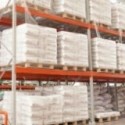
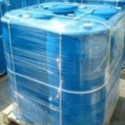
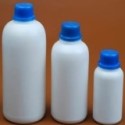
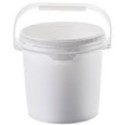

Suppliers and Manufacturers' Representative:

9910 Bent Oak Dr
Houston, TX 77040, USA
Call Toll Free: 1-855-55-AMMOL 1-855-552-6665
Email: info@ammol.org
